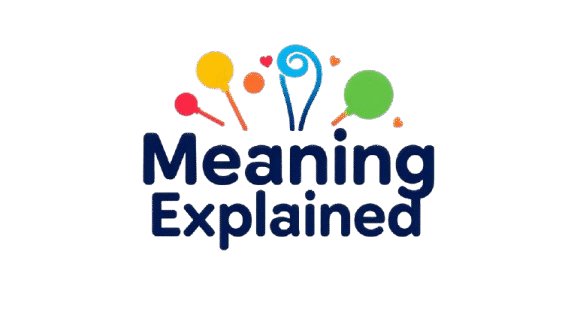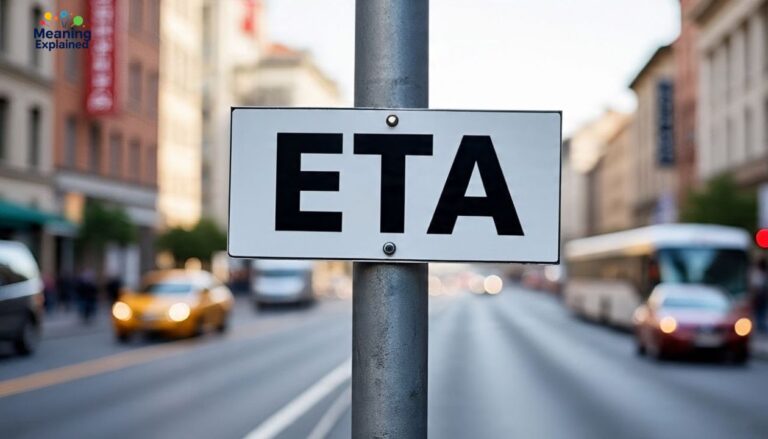ETA, or Estimated Time of Arrival, is a term we hear all the time, from tracking packages to planning meetups. It’s a simple way to share when someone or something is expected to arrive. This article explains what ETA means, where it came from, and how it’s used in different situations.
The beauty of ETA lies in its versatility—it’s not just for flights or deliveries but also for work projects and casual chats. Knowing when to expect something helps us plan better and stay organized. Whether in business or daily life, ETA keeps things clear and on track.
Understanding ETA’s role can make communication smoother and more reliable. By exploring its uses and best practices, this guide shows why ETA is so important. From logistics to personal plans, it’s a small term with a big impact.
What Does ETA Stand For?
ETA stands for Estimated Time of Arrival, a term used to indicate when a person, vehicle, or item is expected to reach a destination. It’s a concise way to share timing expectations in various settings, from logistics to casual plans. This acronym is widely recognized for its clarity and utility.
In professional fields like transportation or project management, ETA ensures smooth coordination by setting clear timelines. In everyday life, it helps people plan meetups or track deliveries. Understanding ETA’s meaning enhances communication and keeps things on track.
Origins of ETA
The term ETA, short for Estimated Time of Arrival, began in transportation and logistics to communicate expected arrival times efficiently. Its use dates back to industries like shipping and aviation, where precise timing was critical for operations. Over time, ETA became a standard term to streamline coordination.
As communication needs grew, ETA’s simplicity made it popular beyond its original scope. It spread to project management, technology, and everyday conversations. Today, ETA is a universal acronym, valued for its clarity in time-sensitive scenarios across various contexts.
Applications of ETA in Different Fields

Below is a list of 20 applications of ETA (Estimated Time of Arrival) across various fields, maintaining the structure and context from the provided article. Each point includes a brief description and an example to illustrate its use, ensuring relevance and clarity.
- Airline Operations ETA helps airlines inform passengers about flight arrival times, aiding in scheduling. Example: “Flight AA123’s ETA is 7:45 PM.”
- Shipping and Freight Logistics companies use ETA to update clients on cargo delivery timelines. Example: “The container ship’s ETA at the port is 3:00 AM.”
- Public Transportation Buses and trains provide ETAs to help commuters plan their journeys. Example: “The next train’s ETA is 10 minutes.”
- Ride-Sharing Services Apps like Uber or Lyft use ETA to inform passengers when drivers will arrive. Example: “Your driver’s ETA is 5 minutes.”
- Project Deadlines Project managers estimate task completion times to manage workflows. Example: “The website redesign’s ETA is two weeks.”
- Software Development Developers provide ETAs for coding, testing, or deployment phases. Example: “The app update’s ETA is next Monday.”
- IT System Maintenance ETA is used for scheduling server downtimes or updates. Example: “The system upgrade’s ETA is 20 minutes.”
- Data Transfers IT teams estimate the time for large file transfers or backups. Example: “The database backup’s ETA is 1 hour.”
- Customer Support Services Support teams provide ETAs for issue resolution or technician visits. Example: “The technician’s ETA is between 1:00 PM and 3:00 PM.”
- E-commerce Deliveries Online retailers share ETAs for package deliveries to customers. Example: “Your order’s ETA is tomorrow by noon.”
- Event Planning Organizers use ETA to coordinate guest or performer arrivals. Example: “The guest speaker’s ETA is 9:00 AM.”
- Emergency Services Ambulances or fire services provide ETAs to reach incident locations. Example: “The ambulance’s ETA is 7 minutes.”
- Construction Projects Contractors estimate completion times for construction milestones. Example: “The building’s ETA for completion is July 15th.”
- Manufacturing Factories use ETA to predict when products will be ready for shipping. Example: “The batch’s ETA for packaging is 4:00 PM.”
- Military Operations ETA is used to coordinate troop or supply movements. Example: “The supply convoy’s ETA is 0600 hours.”
- Healthcare Appointments Clinics provide ETAs for patient wait times or doctor availability. Example: “The doctor’s ETA to see you is 15 minutes.”
- Food Delivery Services Restaurants and apps like DoorDash provide ETAs for food delivery. Example: “Your pizza’s ETA is 30 minutes.”
- Travel and Tourism Tour operators use ETA for itinerary planning, such as bus or boat arrivals. Example: “The tour bus’s ETA at the museum is 11:00 AM.”
- Casual Meetups Individuals share ETAs to coordinate social gatherings or meetups. Example: “My ETA to the party is around 8:00 PM.”
- Telecommunication Repairs Service providers give ETAs for restoring internet or phone services. Example: “The technician’s ETA to fix the outage is 2 hours.”
Using ETA Appropriately

Using ETA correctly depends on context. In formal settings, such as business or logistics, precise ETAs are crucial. In informal scenarios, approximate times suffice. Always ensure clarity to avoid confusion.
Formal Example:
“The shipment’s ETA is June 10th at 2:00 PM.”
Informal Example:
“My ETA is around 6:30 PM.”
Common Mistakes to Avoid
To use ETA effectively, avoid these pitfalls:
- Inaccurate ETAs: Base estimates on realistic data to prevent miscommunication.
- Ignoring Delays: Update stakeholders promptly if delays occur.
- Overuse in Casual Settings: Excessive use of ETA in informal chats may seem overly technical.
Alternatives to “ETA”
Depending on the situation, alternative terms can replace ETA:
- Expected Arrival Time: A formal substitute for professional contexts.
- Arrival Time: Common in schedules or travel itineraries.
- Due Time: Often used in delivery or service industries.
Conclusion
ETA, or Estimated Time of Arrival, is a key tool for clear communication across various fields. From logistics to casual plans, it helps set expectations and manage time effectively. Using ETA accurately builds trust and ensures smooth coordination.
By understanding ETA’s applications and avoiding common mistakes, individuals and businesses can enhance efficiency. Whether for deliveries, projects, or meetups, ETA simplifies planning. Embracing its proper use makes life more organized and predictablehttps://www.merriam-webster.com/dictionary/predictable.

